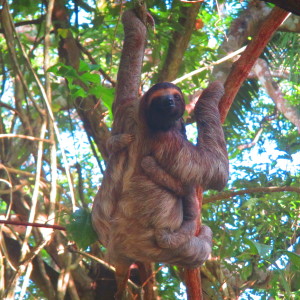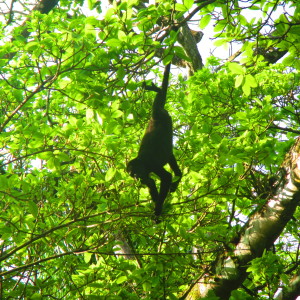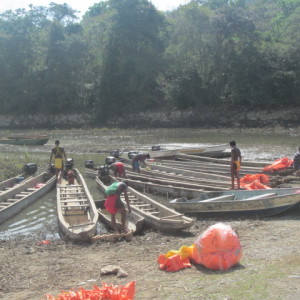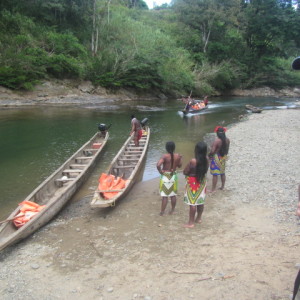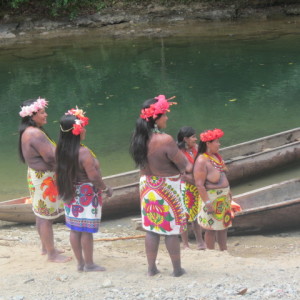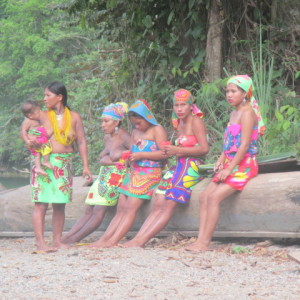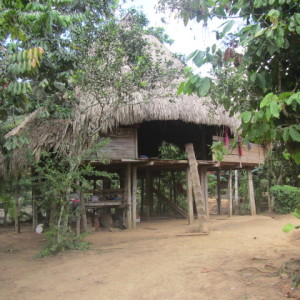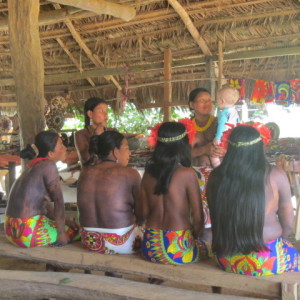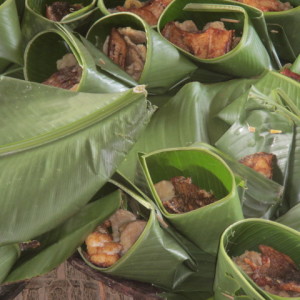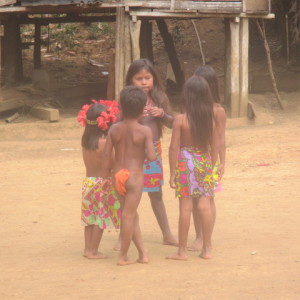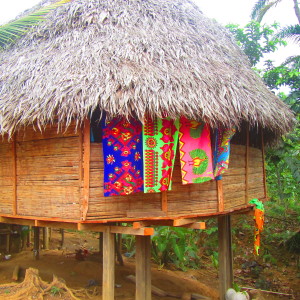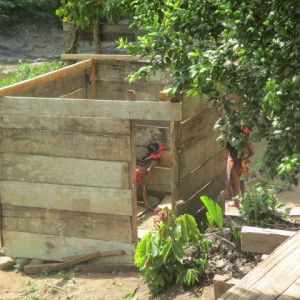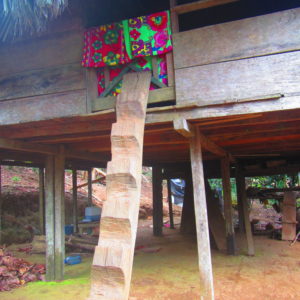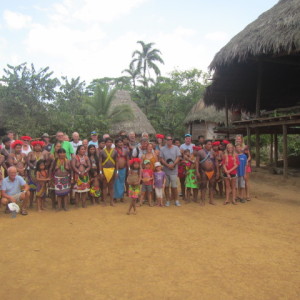We stayed as long as we could in San Blas, but we needed to head down to Colon, where we would transit the Canal. You have to be measured, briefed, etc. beforehand so we left San Blas, overnighted in an anchorage called Linton Island (where we saw monkeys), and headed to Shelter Bay Marina the next day to do what we needed to do. Now we are in Shelter Bay awaiting our canal departure today. We have had some fun here too despite the chores we had to get done. We spent an entire day provisioning because apparently, we are not going to have a big grocery store with good prices until we reach Tahiti so everyone really stocks up big time here. It was an hour bus trip to the grocery store and we were caught up for a bit waiting for a ship to go through the canal (there is a bridge in the canal we have to go through to get to the store). After returning with the groceries, we basically spent hours trying to organize it all and find space for it. What a chore! We finished that off with dinner with Widago while the five kids, who had already eaten, stayed onboard Widago to play together.
There is a short but wonderful walk right at the marina. One day we saw spider monkeys and a mother and baby three-toed sloth, and this morning, Ali and I saw white-faced capuchin monkeys playing in the trees. I still can’t run and my ankle still hurts, but I can’t be completely sedentary!
A great picture of mama sloth and her baby. The baby can be seen in the second photo much better.
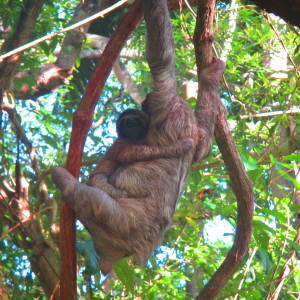
Monkeys in Colon, Panama

Yesterday, the kids and I went on an organized trip to visit the Embera’ Indians. They are one group of indigenous people from Colombia who moved to the national forest land of Panama because of the drug cartel issues in the 1970s. The government provides them two teachers for their children two times a week (up to grade 6), but they are a people who truly live like they have for centuries. They are a peaceful culture that hunts, fishes, and gathers, and they live in elevated huts on the Chagres River. To be able to continue on their own, they allow groups to come to their village two days of the week. They truly do live rustically, but outside influence has crept into their lives as well. They have 15 and 30 horsepower outboards on their dugout canoes! At first, I thought, what a way to ruin the “real” feel of it all, but from where they pick you up to where you need to go, it is an hour up-river and they have to navigate very shallow areas by having someone pull the boat forward with a stick from the bow. When we arrived, we were greeted by a lot of topless village women and some music playing. The villagers make a lot of things by hand and some of it was quite good. They weave intricate plates and bowls, carve wood, and also make animal carvings from a nut called Tagua, which is also known as vegetable ivory. Ryan loved them so much that he bought one with his own money. The villagers made us fried tilapia and plantains and served them in a palm frond bowl. They danced a bit and explored the village. It was an interesting day, but I did feel like it was a bit “staged,” and it didn’t help that a big group of cruise ship people with an obnoxious tour guide came after we were there only about 40 minutes. Prior to that, it was only our group, so it was quieter and subdued. The other ARC folks (who transited the canal on the first day) went to the village a few days earlier and had no cruise ships. We would have preferred that. I am glad we went, as it was very eye opening to see that some people still live so primitively, but I’ll never forget Ryan’s comment when we left: “Before we came here, I didn’t know that everyone would be topless.” A ten-year old boy who was probably a bit shocked at the experience, initially, but he handled it like a travel pro!
Embera Indians, Dug-out Canoe ride to their village an hour away (on the northwestern part of the Chagres River.
The Embera Indians cooking Tilapia and Plaintains in Leaf Bowls
Kids at play
Ariana and 5 year old Angelina

A typical hut and kids playing hide and seek
A staircase that is carved out of a log
Embera Indians and ARC members
So today, we go through the canal. You can actually watch us transit the Panama Canal on their live feed, if you’re interested. The site is: http://www.pancanal.com/eng/photo/camera-java.html
We will be going through Gatun Locks tomorrow afternoon (the 2nd) late afternoon/early evening (approximate time after 4:45 p.m. Eastern time), and the Miraflores locks before noon on the 3rd (that is the Pacific side).
There sure is a lot to it. Being a line handler is not going to be easy, and I may have to rely on Ariana to tie a bowline for me when the line with a monkey fist is thrown at me. Under pressure, I don’t think I can do it and she is a pro! So, you have an “advisor” onboard who will expect dinner tonight and breakfast and coffee by 6 a.m. tomorrow morning for the continuation. We will go through the first set of locks this evening (Gatun), anchor in the man-made lake tonight, and proceed through the locks on the Pacific side (Miraflores) tomorrow morning. The advisors don’t sleep on our boat, but they are there fairly late and back again the next morning.
If you look for us on the live feed, we should be in the middle of three boats, with one monohull on either side of us. The canal is 110 feet wide and can take ships to 106 feet wide. They are building a much wider canal next to it so they can clear through larger vessels. Panama is hoping it will be completed this year.
Also, I found out that a big freighter would pay about $200-$400K to go through the canal, and a cruise ship pays based on potential occupancy (not actual occupancy) and may pay about $475K. Personal sailboats are about $2K from what I understand but the ARC fees cover our transit (and they may get a better deal because we raft up in threes and there are 30 boats). The canal puts through about 30-45 boats per day. Do the math. They make a killing! The U.S. turned it back over to Panama on December 31st, 1999, and Panama earns all of the money from it (and our Navy pays to transit too). Of course, the former President is being hunted down because he was corrupt and pocketed a great deal of money from the canal, but he hasn’t been found yet! Apparently, if Panama does not continue operating the canal properly, the U.S. has the contractual right to come back in and take it over. Wish us luck. This should be a unique experience for the kids (and for us)!
